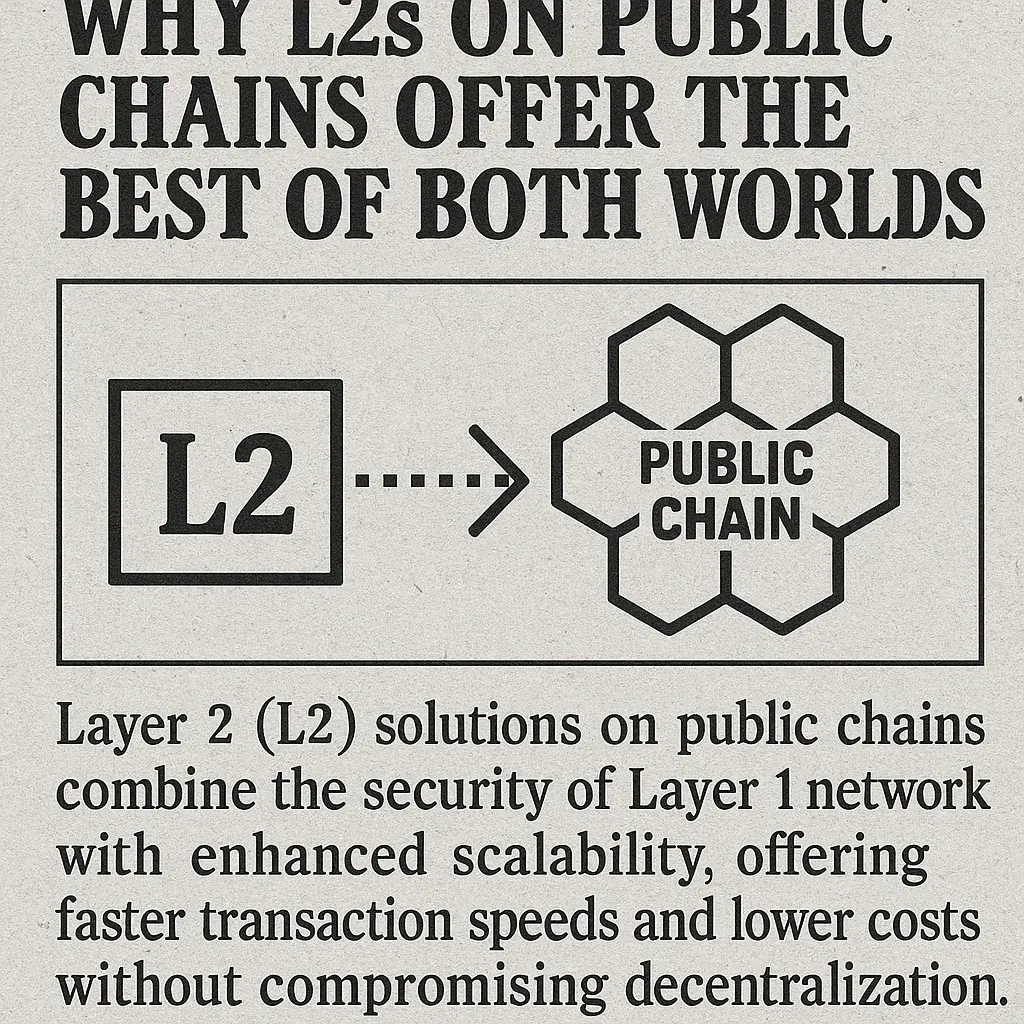
Why L2s on Public Chains Offer the Best of Both Worlds
As blockchain adoption surges and networks like Ethereum hit new user milestones, one question keeps resurfacing: how do we scale blockchains without undermining security and decentralisation? The answer may lie in the growing dominance of Layer 2 (L2) solutions built on top of public chains.
At their core, L2s are secondary frameworks or protocols layered above Layer 1 blockchains (like Ethereum’s mainnet). Their job is simple yet powerful: to enable faster, cheaper transactions while maintaining the security guarantees and decentralisation of the base layer. Imagine them as express lanes situated above the congested blockchain motorway.
Leading the charge are Optimistic Rollups and ZK-Rollups. These technologies work by executing transactions off-chain and submitting bundled data back to the mainnet. The result? Near-instant transaction speeds and minimal gas fees all without giving up Ethereum’s battle-tested foundation.
“L2s provide the scale of Web2 with the trust of Web3,” says Anjali Patel, an analyst at Web3 Strategy Group. “They’re redefining what’s possible in decentralised finance, NFTs, and gaming.”
What makes L2s so unique is their anchoring to public blockchains, ensuring transparency, censorship resistance, and open governance. Unlike private blockchains or sidechains, which may use centralised validator sets or custom consensus models, L2s inherit Ethereum’s immutability and neutrality.
The rise of Arbitrum, Optimism, Base, and Starknet proves the point. These L2 networks now process millions of transactions per week, supporting everything from DeFi platforms to on-chain identity systems. Developers are flocking to L2s because they reduce costs and enhance user experience, a crucial factor for mainstream adoption.
There’s also growing innovation in L2-native applications. From NFT platforms with zero gas fees to DAOs running low-cost governance votes, L2 ecosystems are emerging as vibrant, self-sustaining economies.
Importantly, Ethereum itself is evolving to support this layered architecture. Recent EIP upgrades like 4844 (Proto-Danksharding) promise to lower data availability costs for rollups, making L2s even more efficient and affordable. As Vitalik Buterin noted, the long-term vision is a modular Ethereum, where Layer 1 focuses on consensus and data availability, while L2s handle execution.
This layered approach is crucial, not only for scale but also for preserving the decentralised ethos of blockchain. It ensures that as more users come online, the network doesn't become exclusive, congested, or prohibitively expensive.
The best of both worlds isn’t a promise anymore; it’s a reality. L2s offer both the scalability of centralised systems and the security of decentralised ones. They enable dApps to flourish, users to transact affordably, and developers to build without limitations.
As capital, talent, and adoption continue to pour into this space, expect L2s to become not just a trend but the default gateway to the next era of blockchain-powered applications.